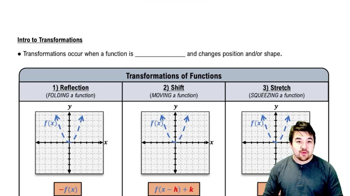Parabola properties Consider the general quadratic function ƒ(x) = ax² + bx + c , with a ≠ 0.
a. Find the coordinates of the vertex of the graph of the parabola y= ƒ(x) in terms of a, b, and c.
 Verified step by step guidance
Verified step by step guidance Verified video answer for a similar problem:
Verified video answer for a similar problem:

